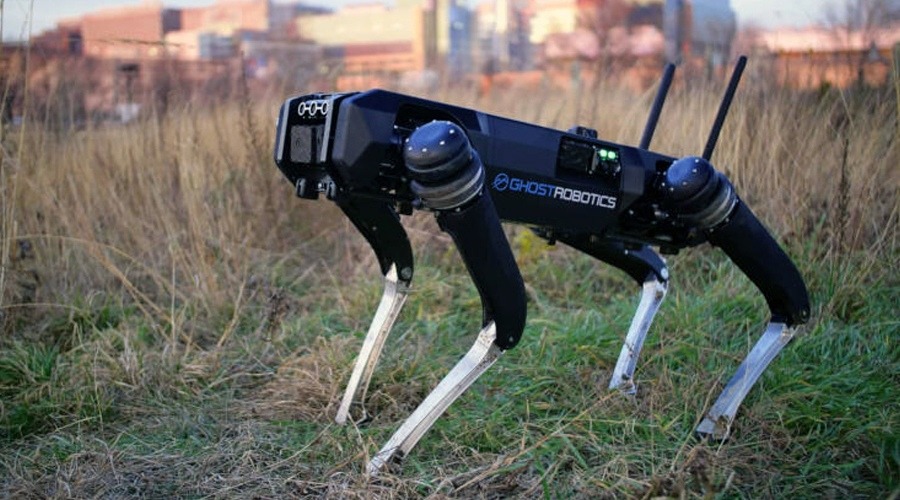In a significant advancement for versatile robotics, Polish company MAB Robotics has unveiled a quadruped robot that can effectively navigate both land and underwater environments, potentially revolutionizing infrastructure inspection and maintenance operations. The Honey Badger 4.0, the latest iteration of the company's quadruped platform, demonstrates unprecedented amphibious capabilities that set it apart in an increasingly crowded field of robotic dogs.
While Boston Dynamics' Spot and other quadruped robots have captured public imagination with their agile movements across terrestrial environments, MAB Robotics has quietly been pushing the boundaries of what these four-legged machines can accomplish. Their latest achievement—underwater locomotion—opens up new possibilities for infrastructure inspection and maintenance in previously challenging environments.
"Creating a waterproof quadruped robot presented unique engineering challenges," explains Jakub Bartoszek of MAB Robotics. "The most critical hurdle was developing actuators that were both lightweight and robust enough to withstand underwater operation. It took multiple prototypes and extensive testing to achieve the right balance."
The technical specifications of the Honey Badger 4.0 reflect this careful engineering balance:
- Dimensions: 60 cm length, 50 cm height
- Weight: 12 kg
- Operating time: 2 hours on a single charge
- Maximum speed: 1 meter per second
- Payload capacity: 2 kg
- Sensing capabilities: RGB cameras, thermal imaging, LiDAR, and gas detection
What sets the Honey Badger 4.0 apart is its practical application in real-world scenarios. The robot has already been deployed in Poznań, Poland, where it inspects heating distribution tunnels and water/sewage canals—environments that combine confined spaces, potential flooding, and hazardous conditions for human workers.
"The small size of the robot, its waterproof design and solidness contribute to being able to operate in environments where other types of mobile robots are insufficient," the company notes, highlighting the machine's ability to navigate underground tunnels, narrow passages, and waterlogged terrains.
The robot's development journey reflects the broader evolution of mobile robotics. Founded in 2019 by former members of a student research group, MAB Robotics has refined their design through four generations, each adding new capabilities. The latest version's ability to operate underwater while maintaining full functionality on land represents a significant leap forward in versatile robotic platforms.
Current operations rely on either 5G or fiber-optic cables for remote control, with the latter being particularly crucial for underwater operations where standard WiFi signals can't penetrate. "The robot uses power from a built-in battery, and all movement-related computations are performed by onboard computers," Bartoszek explains, noting that work is underway to enable autonomous operation for infrastructure inspections.
The implications of this technology extend beyond just infrastructure inspection. Universities are using the platform for research into underwater locomotion, contributing to the broader development of amphibious robotics. This collaborative approach between industry and academia is helping to push the boundaries of what's possible in robot mobility.
Looking ahead, MAB Robotics is working to commercialize their solution for broader applications. The company's success in developing a robust, versatile platform that can operate in both aquatic and terrestrial environments suggests a future where robots can seamlessly transition between different operational domains, much like their biological counterparts.
As cities worldwide grapple with aging infrastructure and the need for regular inspection and maintenance of underground systems, technologies like the Honey Badger 4.0 could provide a crucial tool for maintaining critical services while reducing risk to human workers. The ability to navigate flooded tunnels, inspect underwater structures, and then emerge to continue operations on land represents a significant advancement in robotic capability and utility.
This development signals a new direction in mobile robotics—one where the distinction between land-based and aquatic robots becomes increasingly blurred, opening up new possibilities for automated inspection and maintenance across a wider range of environments than ever before.


















